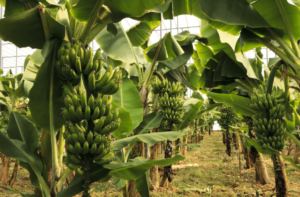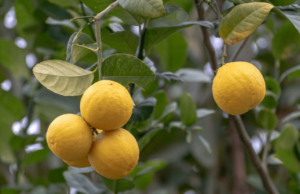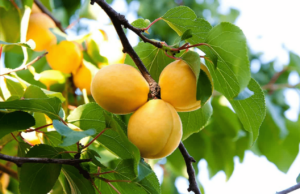Creative Container Gardening Ideas for Small Spaces
Container gardening is a great way to bring the beauty of nature into small spaces such as balconies, patios, and even indoor areas. It allows individuals with limited outdoor space to still enjoy the benefits of gardening, including the joy of nurturing plants and the satisfaction of seeing them thrive. Container gardening is also a fantastic option for those who may have physical limitations that make traditional gardening difficult. With the right containers, soil, and plants, anyone can create a stunning and productive garden in a small space.
Container gardening is not only practical, but it also offers a wide range of creative possibilities. From traditional terracotta pots to repurposed items like old buckets and crates, the options for containers are endless. Additionally, container gardening allows for flexibility in plant selection, as different plants have different needs and can be grouped together based on those needs. Whether you’re interested in growing herbs, flowers, or even vegetables, container gardening can provide a fulfilling and rewarding experience for gardeners of all levels.
Key Takeaways
- Container gardening is a great option for small spaces, allowing people to grow plants even without a traditional garden.
- When choosing containers for small spaces, consider the size, material, and drainage of the container to ensure the best environment for your plants.
- Get creative with planting ideas for small containers by mixing different plants, using vertical space, and incorporating edible and ornamental plants together.
- Maximize space in container gardens by using hanging baskets, stacking pots, and utilizing vertical gardening techniques.
- Incorporate functional and decorative elements such as trellises, watering systems, and decorative planters to enhance the beauty and functionality of your container garden.
Choosing the Right Containers for Your Space
When it comes to choosing containers for your small space garden, there are a few key factors to consider. First and foremost, you’ll want to think about the size and shape of the containers. For smaller spaces, it’s important to choose containers that are not too large or bulky, as they can quickly overwhelm the area. Instead, opt for smaller to medium-sized containers that can easily fit on your balcony or patio without taking up too much space. Additionally, consider the shape of the containers – round pots are classic, but square or rectangular containers can be more space-efficient and fit better in tight corners.
In addition to size and shape, it’s important to consider the material of the containers. While terracotta pots are popular for their classic look, they can be heavy and prone to cracking in cold weather. Lightweight materials such as plastic or fiberglass may be more practical for small spaces, as they are easier to move around and less likely to cause damage to your balcony or patio. Another option is to repurpose items such as old buckets, crates, or even mason jars for a more unique and eco-friendly container gardening experience.
Creative Planting Ideas for Small Containers
Once you’ve chosen the right containers for your small space garden, it’s time to get creative with your planting ideas. One popular approach is to create a “thriller, filler, spiller” arrangement, which involves combining a tall, eye-catching plant (the thriller) with medium-sized plants (the fillers) and trailing plants (the spillers) to create a visually appealing display. This technique works well in small containers, as it adds depth and interest without taking up too much space.
Another creative planting idea for small containers is to mix different types of plants that have complementary growing requirements. For example, pairing herbs like basil and parsley with compact vegetables like cherry tomatoes or peppers can create a beautiful and functional mini kitchen garden. Additionally, consider mixing different colors and textures to create a visually stunning display – for example, pairing vibrant flowers with trailing vines or ornamental grasses.
Tips for Maximizing Space in Container Gardens
| Tip | Description |
|---|---|
| Vertical Gardening | Utilize vertical space by using trellises or hanging planters. |
| Choose Compact Plants | Select smaller varieties of plants to maximize space. |
| Use Tiered Planters | Stack planters to create multiple levels for planting. |
| Utilize Hanging Baskets | Hang baskets to free up ground space for other plants. |
| Grow Herbs and Vegetables | Grow edible plants to make the most of your container garden. |
In small space container gardens, maximizing every inch of space is essential. One way to do this is by using tiered or stacked planters, which allow you to grow multiple plants in a vertical arrangement. This not only saves space but also creates an interesting visual display. Another tip for maximizing space is to use hanging planters or wall-mounted containers, which can free up valuable floor space while adding greenery to your small space.
Additionally, consider using multi-functional containers that can serve more than one purpose. For example, a bench with built-in planters or a coffee table with a hidden planter can provide both seating and greenery in a small outdoor space. Finally, don’t forget to utilize vertical space by adding trellises or stakes for climbing plants like peas or cucumbers. By thinking creatively and making the most of every available space, you can create a lush and productive container garden in even the smallest of areas.
Vertical Gardening Techniques for Small Spaces
Vertical gardening is a fantastic technique for small spaces, as it allows you to grow a wide variety of plants without taking up valuable floor space. One popular method of vertical gardening is using trellises or stakes to support climbing plants such as peas, beans, or cucumbers. These plants can grow upwards instead of outwards, making them perfect for small balconies or patios.
Another vertical gardening technique is using wall-mounted planters or hanging baskets to add greenery to vertical surfaces. This can be especially useful for individuals with limited floor space but plenty of wall space to work with. Additionally, consider using a living wall system, which allows you to create a stunning vertical garden by planting in pockets attached to a vertical structure.
Incorporating Functional and Decorative Elements in Container Gardens

In addition to plants, container gardens in small spaces can benefit from incorporating functional and decorative elements. For example, adding a small water feature such as a fountain or birdbath can create a peaceful and relaxing atmosphere in your small outdoor space. Additionally, consider adding seating options such as benches or chairs that can double as planters or have built-in storage for gardening tools.
Decorative elements such as colorful cushions, outdoor rugs, and string lights can also help create an inviting and cozy atmosphere in your small space garden. Don’t be afraid to get creative with decorative elements – repurposed items like old ladders or pallets can be used as vertical planters or shelving units for added visual interest.
Maintenance and Care for Container Gardens in Small Spaces
Proper maintenance and care are essential for keeping your container garden thriving in a small space. Regular watering is crucial, especially in smaller containers that can dry out quickly. Consider using self-watering containers or adding drip irrigation systems to make watering more efficient and less time-consuming.
Additionally, regular fertilizing and pruning are important for keeping your plants healthy and productive. Be sure to monitor your plants for signs of pests or diseases and take appropriate action if necessary. Finally, don’t forget to regularly clean and maintain your containers to prevent any build-up of algae or mold.
In conclusion, container gardening is a wonderful way to bring the beauty of nature into small spaces. By choosing the right containers, getting creative with planting ideas, maximizing space, utilizing vertical gardening techniques, incorporating functional and decorative elements, and providing proper maintenance and care, anyone can create a stunning and productive container garden in even the smallest of areas. Whether you’re an experienced gardener or just starting out, container gardening offers endless possibilities for creating a lush and vibrant outdoor oasis in your small space.
FAQs
What is container gardening?
Container gardening is a method of growing plants in pots, containers, or other vessels instead of planting them directly in the ground. It is a popular option for people with limited outdoor space or for those who want to add greenery to their patios, balconies, or indoor spaces.
What are some benefits of container gardening?
Container gardening allows for flexibility in terms of location, as pots and containers can be moved around to optimize sunlight and space. It also provides better control over soil quality and drainage, and can help prevent certain pests and diseases from affecting the plants.
What are some popular plants for container gardening?
Some popular plants for container gardening include herbs like basil, mint, and rosemary, as well as flowers like petunias, geraniums, and marigolds. Vegetables such as tomatoes, peppers, and lettuce also thrive in containers.
What are some creative container gardening ideas?
Some creative container gardening ideas include using unconventional containers such as old tires, wooden crates, or even repurposed household items like teapots or mason jars. Vertical gardening with hanging baskets or wall-mounted planters is also a popular and space-saving option.
What are some tips for successful container gardening?
To ensure successful container gardening, it is important to choose the right size and type of container for the specific plant, use high-quality potting mix, provide adequate drainage, and water and fertilize the plants regularly. Additionally, paying attention to sunlight and temperature requirements for each plant is crucial for their growth and health.


